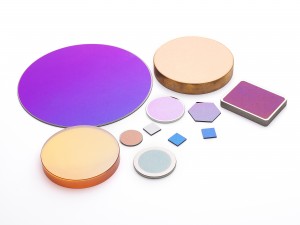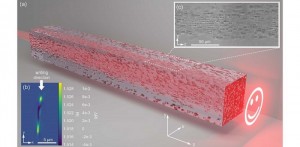
Optical components are a necessary part of modern society. They are used almost everywhere. As long as there are optical systems, optical coatings will be necessary. And it is thin-film technology which allows these optical systems to fulfil their incredible potential.
Thin-film tech is key to the ultimate performance of numerous optical systems, which play a key role in applications ranging from biomedical and analytical instrumentation to advanced laser systems.
Its production can be traced back to 1817 when the antireflection effect of a single layer on glass was first discovered by German scientist and optician Joseph von Fraunhofer. Nowadays, supercharged by an unlimited number of applications and an unquenchable market thirst, their sophistication has advanced as rapidly as most other mass-market technical products.
Optical thin films involve the interaction of electromagnetic radiation, at different wavelengths, with a deposited functional layer. And filters typically consist of multiple alternating layers of high and low-refractive-index material deposited on a glass substrate. They work based on wavelength-dependent interference of light reflected or transmitted at the many interferences between layers.
In the late seventies and early eighties, dense wavelength division multiplexed (DWDM) brought about substantial improvements in virtually every aspect of thin-film optical coating design, manufacture and performance. The subsequent capabilities this unlocked, particularly in the telecoms field, were staggering.
The possibility to tailor film properties through the variation of microstructure via deposition parameters and the deposition technique has facilitated their use for the simplest protective coatings against wear and corrosion to the most technologically advanced such as microelectronics and biomedicine.
A novel approach
For a thin film to be used in optics, each layer of different materials ranges from a fraction of a nanometre to several micrometres. Their synthesis is controlled via deposition, with one or more layers of material deposited onto the substrate, usually by vapour deposition.
Umicore manufactures thin-film optical coating solutions from 2µm to 14µm wavelengths across a variety of substrates, and its coatings offer exceptional spectral and environmental performance that can be used on lenses to combat aberrations or defects.
Take a camera lens for example. These are often coated with thin, transparent multilayers of metals such as titanium dioxide, silicon nitride or silicon oxide, to combat defects or aberrations. These thin layers are deposited on a lens and alter the way the optic reflects and transmits light. Each application requires different optical filter characteristics.
Improvements in cost, performance, and availability of key components have driven the diversification of lidar systems, a remote sensing method that uses light in the form of a pulsed laser to measure ranges (variable distances) to the Earth in fields such as autonomous vehicles, atmospheric science, terrain mapping, and oceanography. Optical filters are used either as a receiver to isolate the signal from background light or at the transmitter to clean up the spectral characteristics of the laser.
These unassuming thin films are used in many different fields and optical applications are an important class, where they excel for efficacy, scalability and increased product value. They can be used to manufacture filters, mirrors, and anti-reflective coatings, all of which are applied in different industrial fields like automotive, biomedical and optoelectronics.
The production of advanced optical coatings with complex spectral characteristics and high performance is directly dependent on the stability of the deposition process and on the accuracy of the monitoring system employed for controlling the thickness of layers.
Continuous improvements in these techniques, the materials, better process controls, and innovative work such as our own, meaning we are continually developing a new understanding in regards to design, expertise and practical production. While we innovate, we enable so many other industries to do the same.
The science is well documented and widely known. The possibilities and limitations of controlling light, operating equipment, selecting best-suited materials, along with control techniques, process development, practical knowledge and precision engineering are where true mastery is achieved.
In choosing to work with thin film coatings specialist, you take away much more than finished goods. Satisfied customers also tap into our wealth of practical knowledge; whether that is design optimisation methods, the latest spectral measurement equipment, new substrates, or optical monitoring techniques.
From holy grail to commodity
The growth of computer technology made high-density systems of storage obligatory, and it is this which has driven frantic research and development, specifically on optoelectronics, magnetic and optical properties of thin films.
With the ability to upgrade the properties of substrate materials through a range of deposition materials, the right manufacturer can meet the exact needs of a host of highly-specialist applications. Device miniaturization continues to pedal its growing commerciality while at the same time driving down the costs associated with equipment and processes.
Fields such as engineering, magnets and energy, and applications like neurological sensors, optical memories and friction reduction, continue to demand innovation from our industry.
There is little doubt we are in the midst of a bold new period of advancement in novel applications for societal benefit. Developments in different fields of nanotechnology, LEDs, photovoltaics and solar cells, and environmental and medical diagnostics continue apace, while many keen observers are watching with fascination to see their contribution to areas such as spectral imaging, time-correlated single-photon counting, kinetic chemical reaction rates, non-invasive optical biopsy and visual implants.
The very same technological advances that were spurred by optical communications systems are suitable for application to a wide variety of other established and emerging markets. The availability of high-performance optical filters holds great potential and if coordinated evolution continues then this article would read very differently in five or 10 years time.
Written by Mark Naples, General Manager, at Umicore Coating Services































 Back to Features
Back to Features



























